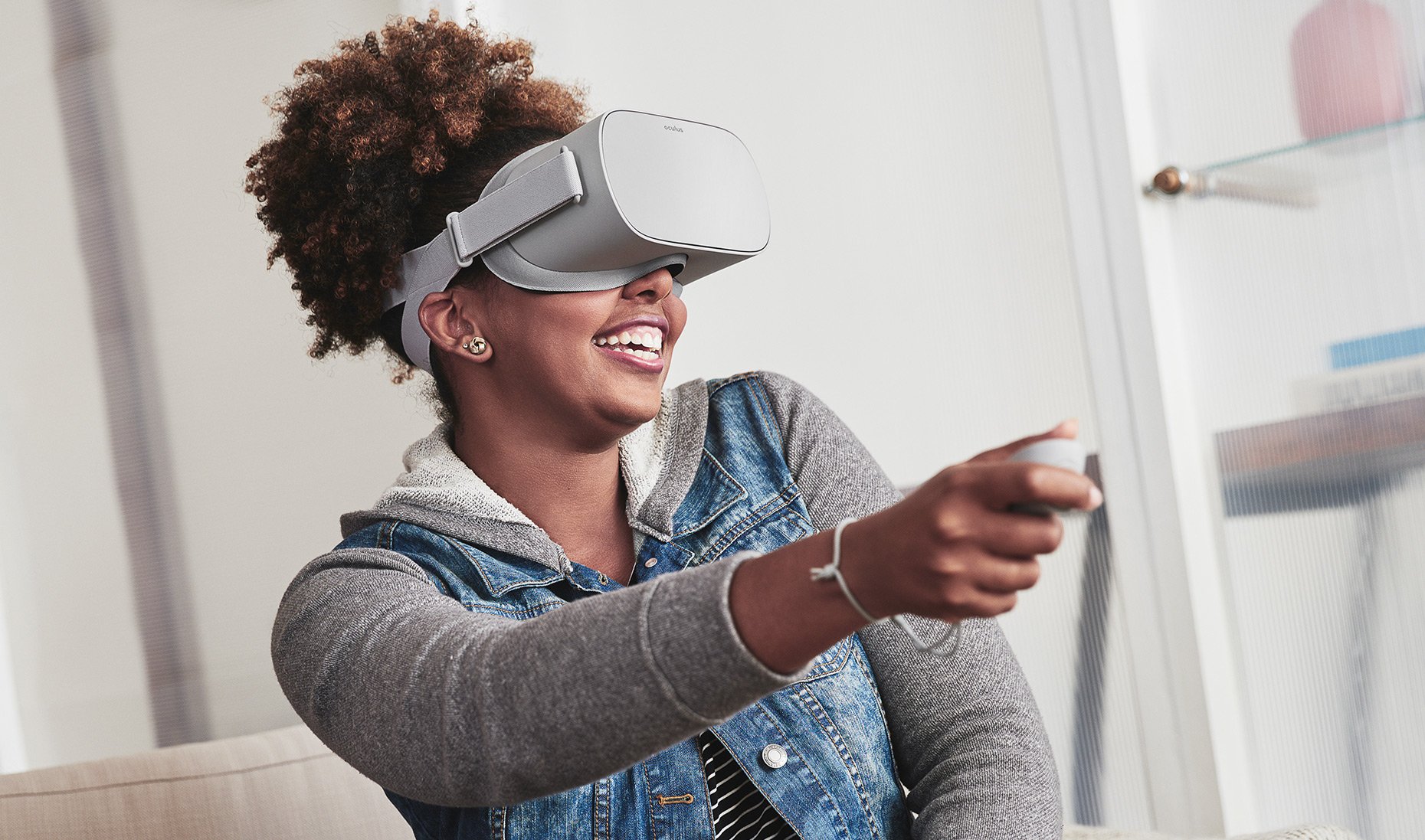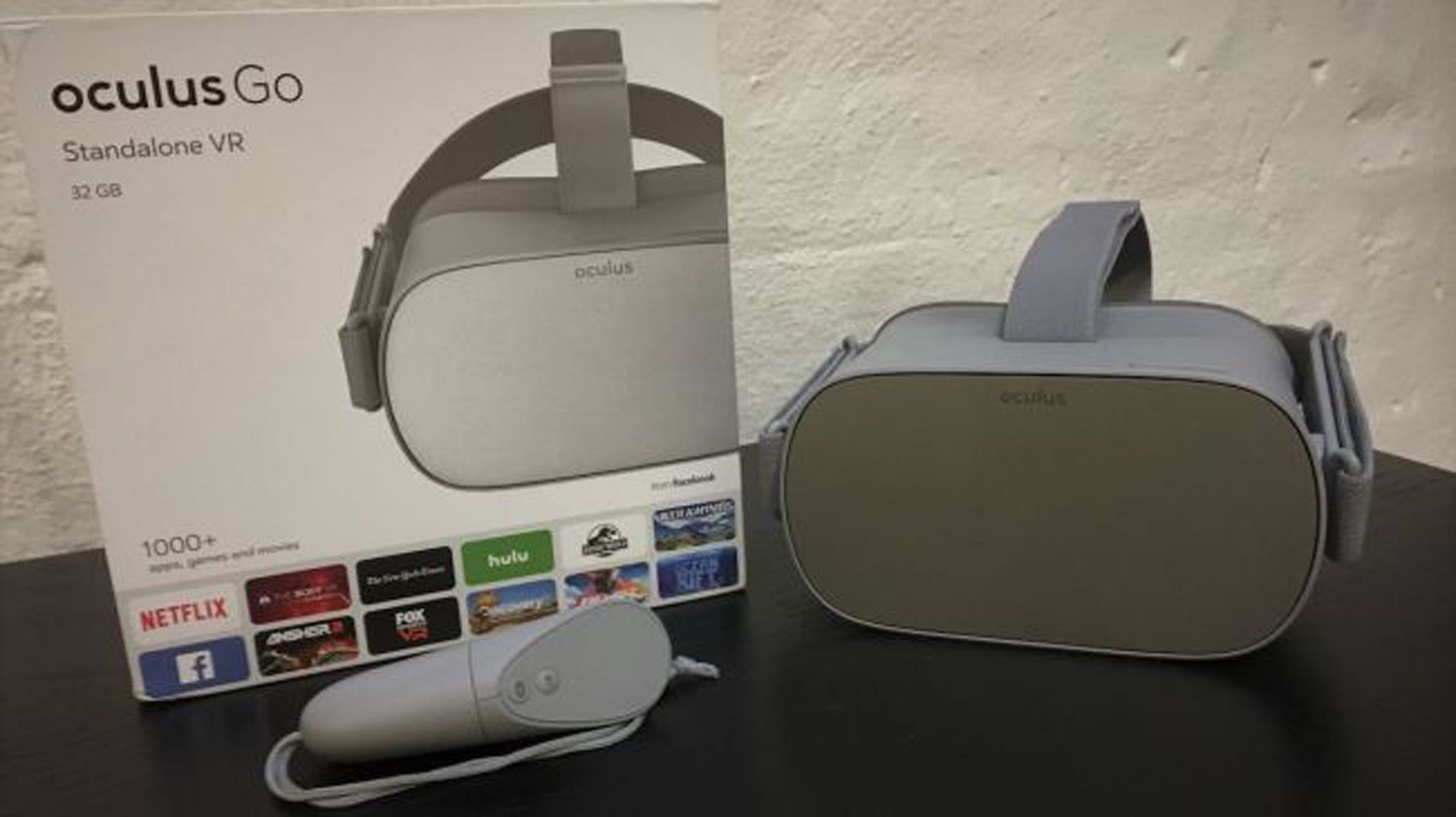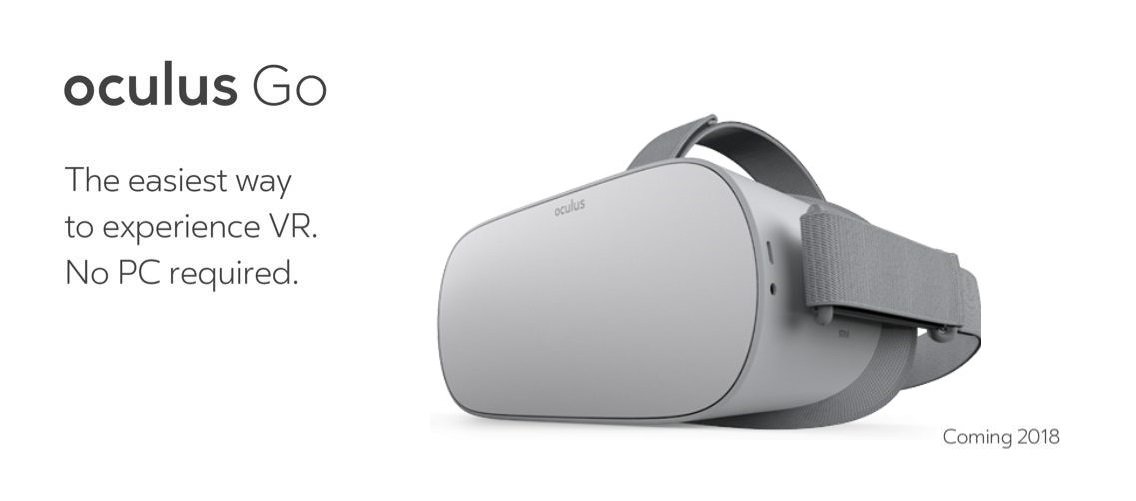We now have a third headset on the way from Oculus.
At Oculus Connect 4, Mark Zuckerberg announced that Oculus is working a new headset that sits in a "sweet spot" somewhere between Gear VR and Rift.
Officially called Oculus Go, this headset requires no phone and no cables running to the PC. It will be able to play movies, run games, and help you meet up with friends in VR. We've got the details for you here!
March Update: Oculus VR CTO John Carmack gives us more information
Yes, significantly better. BTW, did someone from support get in touch with you about the video regression? There is a task open.
— John Carmack (@ID_AA_Carmack) February 23, 2018
We still don't have an official release date for the Oculus Go, but John Carmack has recently answered some tweets that give us a little more information on this anticipated device! He's confirmed the OGO will most certainly perform better than the Galaxy 7 on a Gear VR. This information doesn't surprise us as far as expectations go, but it's still nice to have them confirmed!
To elaborate, as mentioned below in regards to specs, the OGO will sport new lenses. a WQHD LCD fast-switch display with a higher fill-factor than OLED, and a Snapdragon 821 processor. Given the fact that The Samsung Galaxy 7 uses Snapdragon 820, it only confirmed John's statement wasn't just for advertisement. That being said, the OGO processor doesn't beat the Galaxy 8, which sports a Snapdragon 835.
So, although they previously mentioned the OGO will be "Somewhere between the Gear VR and the Oculus Rift," it seems like it'll more so be between the Gear VR on a Galaxy 7 and the Gear VR on a Galaxy 8 (in regards to performance).
Tell us what you think in the comment section below!
February 14th update: Developers give public feedback
"The display is much crisper than CV1. The FOV seemed slightly tighter (not much). Felt like the same performance as a GVR, just better screen."
kevinw729 on the Oculus Forums has announced that he was one of the Devs that got to try out the Oculus Go (OGO) and gave us his feedback.
Kevin also notifies the public that he did not see a slot for an SD card nor does he know what the final production of the battery life will be like. I'm going to stand by my assumptions in the last update that everything looks far too "consumer" ready for changes at this point. As I still wouldn't be surprised if they were already in mass production, who knows?
Finally, as of right now no one is sure if the OGO is going to only be accessible to the Oculus Store, or if it will be able to branch out to others as well. If so I think Kevin and I are in an agreement here, Google Daydream might be in some trouble.
February 2nd update: Developer kits revealed
Developers have received the first Oculus Go boxes and gave us a sneak peek of them, as seen above. The images have since been removed from their Twitter accounts, but thankfully are still floating around.
If you notice the box it looks consumer ready already. I'd imagine they are just as close to the release date as they say they are. Oculus' Website promises an official release early 2018, so I'm anticipating a late Spring release.
Other than this we've also been told that the Gear VR games will be compatible with the Oculus Go as well. This means plenty of titles will be available right from the start! A list of compatible games and experiences are listed below!
What is Oculus Go?
Oculus Go is the third headset from Oculus, and it's meant to sit between Gear VR and Oculus Rift. A cordless headset, you'll no longer have to strap in at your PC or have enough juice on your phone in order to play in VR.
It is built to be lightweight, has a new mesh foam interface, and it supposedly has the best visual clarity so far seen in VR, thanks to new lenses and a WQHD LCD fast-switch display with a higher fill-factor than OLED. We learned at CES 2018 that Oculus Go is going to be made by Xiaomi, and it will be run by a Snapdragon 821 processor making it more than capable of playing the awesome games that are going to be available.
Oculus says this headset lives somewhere in between the Gear VR and Oculus Rift, but it leans much closer to the Gear VR than you might expect. This is a standalone headset, meaning the computer is inside the headset with the display, but it's still an Android-powered headset. The good news is this means it will run many of the apps currently available for the Gear VR. That means the headset will not let you walk around and do much. Functionally, this will be very similar to the Gear VR.
Read more: Lenovo Mirage vs Oculus Go
Whats the difference between Oculus Go and Gear VR?
To begin with, Oculus Go is a stand-alone headset. This means no need to be wired into your computer like Oculus Rift, or the need for a top of the line phone like with Gear VR. It's a middle of the road option that is priced affordably in an effort to draw in new users to help Oculus reach their goal of one billion VR users.
Instead of including headphones with the headset, a spatial audio experience is built right into the headset. That is spatial speakers that are built on the rails of the headset to let you hear what's going on clearly without headphones. Of course, if you'd rather go with classic headphones, you can plug a set of your own into a 3.5mm jack. Oculus Go will have a controller similar to that of Gear VR, meaning devs can create apps that work on both platforms.
Indeed, a lot of the Gear VR's best apps will be available for the Oculus Go from day one. The controller employs three degrees of freedom (DoF), which is the same as the Gear VR controller. It's interesting to note that the Go headset will also use three DoF. To put that into perspective, the Oculus Rift uses six DoF.
Oculus Go will also have access to its own catalog of games and apps to dive into on launch day. While ports of Gear VR games are sure to show up, you'll be getting access to new content with Oculus Go. From the photos we've seen of Oculus Go, there is also a fairly pared down look compared to Gear VR. No touchpad on the side of the headset, and only two buttons on the top; volume controls, and a power button.
Games and Experiences
Since we have been notified that Gear VR apps and games will be compatible with Oculus Go we know we'll have plenty to keep us occupied. Some of the titles in games you'll be able to play are:
- Where's Om Nom?
- Bait!
- Cloudlands VR Minigolf
- Lands End
- Ocean Rift
- Smash Hit
- Rush
- VR Sports Challenge
- Dragon Front
- Sing Space
- Dead and Buried
- Anshar Wars 2
- Ultrawings
- Rangi
And as for Experiences you'll have:
When is it launching?
The official website for Oculus Go still has the announced release date to be sometime in early 2018. If you want to keep notified keep checking in or sign up for their e-mailed newsletter by following the link below.
Redditer LifeWithAdd has found an image released by Oculus where it simply says "2018" instead of "early 2018". Yet, as the website still shows "Early", we'll be expecting the headset before June 2018!
Get notified about the launch date at Oculus
How much will it cost?
While we don't have an exact launch date yet, we do know how much Oculus Go is going to cost. You'll be able to pick up this standalone headset for a tidy sum of $199. Considering Gear VR alone costs $129.99 and requires a top of the line smartphone, this is pretty exciting news!
Are you excited?
For now, we don't have a ton of information about everything that Oculus Go will be able to offer, but that should be changing soon. However, the details we do have are definitely worth getting excited about, especially since this is a stand-alone headset, with an affordable price tag. Are you excited about Oculus Go, or are you sticking with another Oculus headset? Let us know about it in the comments below!
Updated March 2018: We've updated this post with comparisons to the Oculus Go processor to the Galaxy 7 processors running a Gear VR, confirmed by the VR CTO of Oculus!







0 Response to "You Can See More: Oculus Go: Everything you need to know!"
Post a Comment